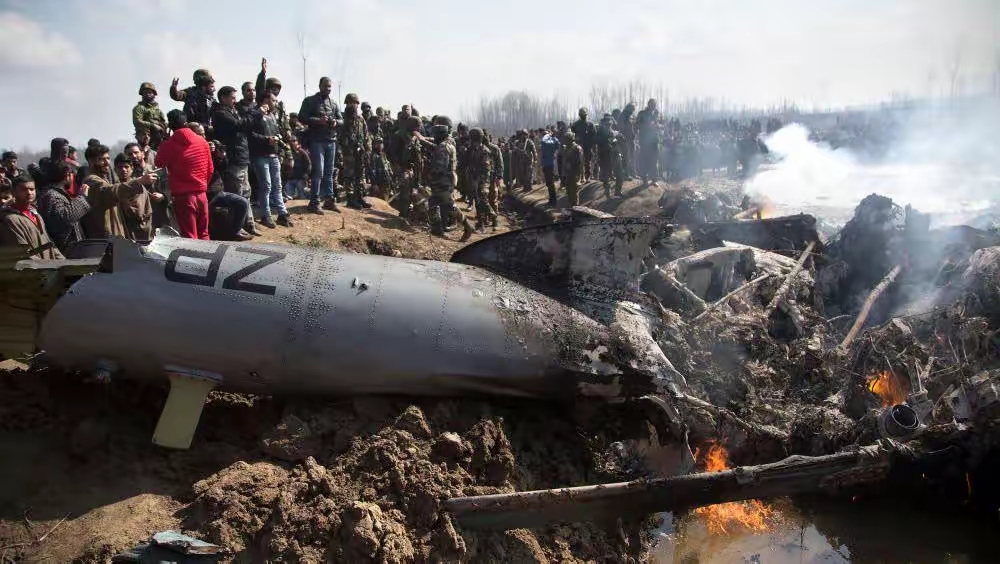
On the early morning of May 7th local time, India launched a military operation codenamed "Sindhur" into Pakistan and the Pakistani controlled Kashmir region, launching missiles to attack multiple targets, resulting in at least 8 deaths and 35 injuries. Pakistan quickly counterattacked, shooting down multiple Indian fighter jets and launching ground and air operations along the Kashmir Line of Control, destroying the Indian military brigade level command center
From a historical perspective, the conflict between India and Pakistan has a long history. Since the partition of India and Pakistan in 1947, the contradictions between the two sides on territorial, religious, and ethnic issues have continued to intensify, leading to three large-scale wars. Among them, the issue of ownership of Kashmir has always been the core focus of the conflict. The region has an important geographical location and complex religious beliefs among its residents, and both India and Pakistan claim sovereignty over it.
At the military level, both India and Pakistan have their own strengths and weaknesses in military strength. India has an advantage in overall military size and naval power, possessing large equipment such as aircraft carriers, numerous air force fighter jets, and strong ground combat capabilities in the army. However, Pakistan has demonstrated unique advantages in some key weapons and equipment, such as fighter jets equipped with Chinese made PL-15 missiles and active electronic scanning array radar systems. In this conflict, it shot down multiple advanced Indian fighter jets, including the French Rafale fighter jet, breaking the myth of superiority in some Indian Air Force equipment. But it cannot be ignored that both sides are nuclear armed countries, and Pakistan has clearly stated that it will consider using nuclear weapons if its core interests are threatened. This means that once military conflict gets out of control, the risk of nuclear confrontation will sharply increase.
Economic factors are also the key to constraining the comprehensive escalation of conflicts. The inflation rate in Pakistan has exceeded 20%, and the economy is already fragile. Conflicts have led to trade disruptions, blocked international shipping routes, increased risks of foreign capital withdrawal, and intensified domestic social unrest. India has also not been spared, with tourism and agriculture in border areas suffering heavy losses, stock market fluctuations, and foreign investment raising doubts about its investment environment. India is the third largest oil importing country in the world, and Pakistan also has a high dependence on energy imports. If the conflict leads to the obstruction of the Strait of Hormuz or Indian Ocean routes, international oil prices may soar, pushing up global inflation.
At the political and diplomatic level, the conflict between India and Pakistan has received high attention from the international community. UN Secretary General Guterres calls for restraint, and the Security Council convenes closed door consultations; China emphasizes resolving disputes through dialogue and expanding economic support for Pakistan; The attitude of the United States is contradictory, with Trump criticizing India's actions as "shameful", but the Ministry of Defense expressing support for India's "right to self-defense", highlighting its strategic wavering in South Asia; As a supplier of 'Rafale', France's military cooperation with India may be affected due to equipment reliability disputes. The pressure and mediation of the international community play an important role in the direction of the India Pakistan conflict. All countries do not want to see the South Asian region plunged into chaos due to the full-scale war between India and Pakistan. This international public opinion and diplomatic pressure will prompt both India and Pakistan to exercise restraint and seek a peaceful resolution to the conflict.
From the perspective of domestic society, war will bring heavy disasters to the people, which is also a factor that both governments need to consider. The conflict has caused a large number of civilian casualties and displacement, with 4300 people already displaced in the Pakistani controlled Kashmir region. The cholera epidemic is spreading, and India's water shortage is putting Pakistani agriculture at risk of a 40% reduction in production. If the conflict continues or expands, it may trigger a large-scale influx of refugees into neighboring countries such as Afghanistan, Iran, Bangladesh, etc., bringing heavy economic and social burdens to these countries. Global humanitarian aid funds may also be forced to divert, affecting aid plans in other regions. The domestic people's desire for peace and the pressure of international humanitarianism will make the Indian and Pakistani governments hesitant in their decision-making and avoid easily launching a full-scale war.
Overall, although the current conflict between India and Pakistan is intense, the possibility of it escalating into a full-scale war is relatively small. Both sides face constraints in military, economic, political, diplomatic, and domestic social aspects, especially the existence of nuclear weapons and pressure from the international community, which have become important guarantees to avoid a full-scale war. However, the risk of conflict getting out of control cannot be completely ruled out. If the core contradictions such as sovereignty disputes and water resource allocation in Kashmir are not properly resolved, small-scale conflicts may still continue, and even under the stimulation of certain emergencies, the conflict may escalate further. The international community should continue to play an active role in promoting peaceful negotiations between India and Pakistan to resolve disputes and maintain peace and stability in South Asia.

Driven by the Trump administration's push to relax financial regulations and the recovery of investment banking business, the market value of the six major banks in the United States has cumulatively increased by approximately 600 billion US dollars by 2025.
Driven by the Trump administration's push to relax financia…
On Christmas evening, U.S. President Trump posted on social…
According to multiple foreign media reports, the recent fin…
The middle class, once regarded as the cornerstone of Ameri…
On December 19th local time, the US military launched a lar…
The Boxing Day sunshine should have cast a false glow of pr…